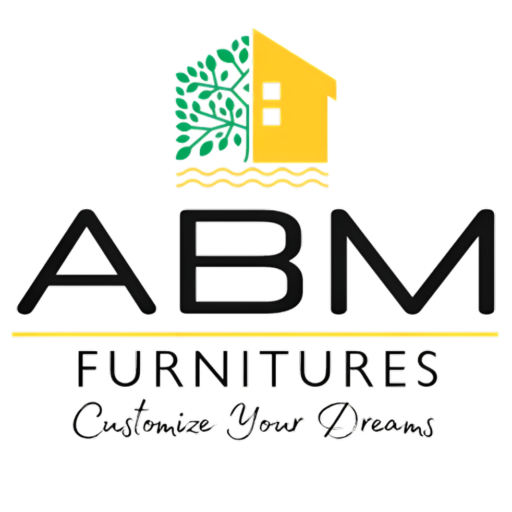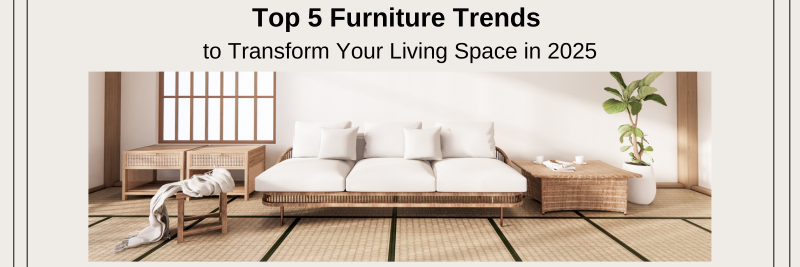The change of time is knocking at the door, ushering into 2025. How we design our homes and furnish our space is changing. Time has just entered 2025, representing personal aesthetics and global priorities concerning sustainability, innovation, and personalization. And it’s no longer just furniture anymore but delivering experiences, managing comfort with modern technology, and making it go with eco-friendly living. Here are some exciting trends to inspire you for that perfect major renovation or upgrading your interiors with standout furniture pieces. We further break down five of these transformative furniture trends into details that can help bring them alive in your home.
1. Sustainable and Eco-Friendly Materials
With the ever-exploding environmental concern, sustainability would then become the guiding factor in furniture design.
It is not limited to earth-friendly materials but ends up giving way to more than that: it gives way to durability, timelessness, and friendliness to the planet.
Key features of the trend:
- Renewable Materials: With the increasing wave of awareness toward waste at present, bamboo, cork, and reused wood furniture are leading the chart. It reduces waste and adds a certain charm to interiors through natural elements.
- Recycled content: Manufacturers have started using recyclable metal, glass, and plastic to make designs appear new and fresh.
- Non-toxic finishes: Environmentally friendly furniture has water-based paints, organic dyes, and low-VOC adhesives for maintaining healthy indoor air quality.
- Circular Design: Modular pieces that can be repaired, refurbished, or recycled keep in line with the circular economy model by furnishing for longer periods.
2. Multifunctional and space-efficient designs
Urbanization and the decline of personal space have led to a boom in demand for furniture that focuses on functionality without sacrificing style. Multi-functional furniture means doing lots with less, making sure every furniture piece has a purpose or two.
Key Features to Look For:
- Flexibility Sofa beds, wall-mounted desks, and extendable dining tables are examples of furniture that provide flexibility while saving space.
- Modular Systems Interchangeable furniture systems allow users to move and add different pieces in a changing room space.
- Built-in Storage Furniture such as coffee tables, and drawers have beds with drawing-in drawer bases, as well as the storage ottoman can efficiently minimize clutter without affecting aesthetics.
- Stackable and Foldable Items: Chairs, tables, and shelves that fold or stack can be easily stored when not needed and are ideal for small homes.
3. Bold Colors and Patterns
Moving into 2025, furniture design finally breaks free from the subtle, neutral tones that have been dominating the previous decade. Today, furniture has become a bold statement device that brings personality and energy with eclectically mixed and bold, vibrant colors.
Key Colour and Design Trends:
- Vibrant Jewel Among them, emerald green, ruby red, and sapphire blue dominate the furniture and throw in living rooms with depth in richness and luxury.
- Geometric Patterns: From cushions to armchairs, bolder geometric designs give a modern edge.
- Retro Vibes: Come back of 70s and 80s styles bring along playful patterns with rounded shapes and bright saturated hues.
- Contrasting Pairing: Bright colors countered with simple shades give rooms a level of depth and become visually interesting.
4. Smart and Tech-Integrated Furniture
Technology has invaded every nook and cranny of our lives, and furniture is not an exception. Smart furniture brings a blend of innovation and convenience to create designs that suit modern lifestyles.
Top Tech Features in Furniture:
- Built-in Charging Stations: Tables and sofas with USB ports or wireless charging pads remove the clutter of cords.
- Smart Lighting: desk and bedside lamps that change in brightness and color temperature through voice command or an app.
- Multifunction Smart Elements: an intelligent bed that can monitor sleep; a coffee table with built-in refrigeration; and a mirror that carries an embedded screen.
- Ergonomic Improvements: desks and chairs that can be adjusted on memory settings to help maintain good health and productivity in work-from-home settings.
5. Nature and Organic Designs
Since people want to reestablish their connection with nature, organic design is also becoming more popular. This trend involves natural texture and earthy tones so that people will feel serenity and relaxation coupled with even calmness when relating to materials used within this space.
Organic Furniture Elements:
- Natural Materials: Rattan, jute, stone, and unfinished wood make the insides earthy.
- Soft Curves and Shapes: Inviting and harmonious furniture with rounded edges, organic forms, and smooth curves.
- Neutral tones: tones like beige, terracotta, sage green, and sand are eternal and warm.
- Indoor/Outdoor fusion: furniture that seamlessly moves from indoors to outdoors, thereby eliminating the line of distinction between an indoor comfort zone and an outdoor relaxation zone.
6. Customizable and Personalized Furniture
The days are long gone when mass-produced, all the same furniture was considered OK. On the contrary, it is personalization that helps in designing pieces to match tastes and lifestyles that are peculiar to individuals.
Customization Options:
- Modular Systems: Choose the number of seats, fabric, or arrangement for sofas or sectionals.
- Material Choices: Choose between wood, metal, glass, or upholstery, whichever suits your style the best.
- Custom Dimensions: Select furniture in custom-made sizes to fit irregular spaces or unique room arrangements.
- Design Tools: Many brands now offer online 3D design tools that let customers visualize and create furniture from scratch.
7. The Return of Artisanal and Handcrafted Pieces
In such a world where mass production is taking over the globe, the interest in craftsmanship and individuality of handmade furniture stands out. Handcrafted furniture also looks different and has emotional value.
Why Handmade Furniture Is Hot:
- Cultural Heritage: Most artisanal furniture traditions rely on conventional techniques and designs. Not to mention, they are inherently highly historically rich.
- Uniqueness: Every hand-created piece of furniture is unique with its own character and has a history to tell.
- Quality Over Quantity: Handcrafted furniture is mostly assembled from better quality material and paid for with careful attention.
- Supporting the Local Communities: Buying from craftspeople preserves the traditional trades and supports local economies.
Conclusion
Homeowners’ and designers’ preferences are shaping the furniture trends leading into 2025. From eco-friendly materials and multi-functional designs to bold colors, tech integration, and personalized pieces, these trends cater to diverse tastes while addressing practical needs. Whether it’s the organic appeal of natural textures, the vibrancy of bold patterns, or the convenience of smart solutions, the focus is on transforming your living space into a modern sanctuary.
With creativity paired with thoughtful design, your home can evolve into a stylish, functional environment that truly mirrors your personality. At ABM Furnitures, we’re committed to bringing these trends to life, offering innovative solutions that redefine your way of living. Whether you’re seeking inspiration or shopping at the best living room furniture showroom, these ideas will help you craft a space that’s uniquely yours—one piece of furniture at a time.



